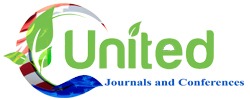info@upjac.com | +1 (347) 486-4833
Plagiarism Policy
- Plagiarism is presenting someone else’s work as their own without appropriate attribution.
- United Journals follow strict policy in case of plagiarism within its purview. Before, during or after the publication process if the editorial board member, reviewer, author etc. detects plagiarism in any manner; the authors are requested to produce proper citations. If an article is found to more than 25% plagiarized, then it is rejected and the author is informed the same.
- The submitted manuscript is inspected for the plagiarism ahead of the review process.
- The publishers request our readers that if they come across any instance of the plagiarism; they report to the editorial office giving the details such as the journal name, manuscript title, volume number, issue number, year of publication or any other information which may be of interest to the journal. The publisher guidelines are taken into consideration in this regard.
- The author’s office and funding agencies are contacted in a case when a manuscript which has cleared the review and gotten published in the journal but is later detected to have plagiarized content. Each page of the document is marked, and the article may also be formally retracted based on the extent of plagiarism.
- Anti-plagiarism software is used to detect the originality of an article. The manuscript that has been submitted is taken for an unpublished work which is not being considered for publication elsewhere. Duplicate publication of the submitted manuscript in whole or in parts will be considered as a violation of plagiarism policy and is not entertained by United Journals. Plagiarism also essentially violates the laws of copyright and includes figures, tables, equations or illustrations and also direct downloads from the internet without proper acknowledgement to the sources from which they are taken.
- Sometimes, the authors are in danger of committing self-plagiarism. It refers to the reuse of one’s own copyrighted material without proper attribution to the original source. If a categorical reference is made to previously published work or the exact sentences are cited in quotation marks, it clearly separates it from the rest of the content and doesn’t create any ambiguity. At times, the authors may not be aware that they are plagiarizing the content; nevertheless, it is one’s own responsibility to clearly differentiate between paraphrasing and quoting exact words and citing with proper references. At times, the authors knowingly borrow the ideas, contents from the other authors which constitutes blatant plagiarism. Sometimes, the authors resort to much more devious means such as salami-slicing where the authors extract small amounts of data in increments from the previously published articles.
If suspected plagiarism is detected in a published article
- Whoever has disclosed this information is advised to follow the process to constructively deal with the issue.
- The extent of plagiarism committed in the suspected published article is evaluated.
- The Editorial Board members are informed and asked for their valuable feedback.
- The author for the article in question is contacted with supporting evidence and a response is sought.
- If the authors are found guilty of plagiarism, United Journals officially retracts the paper.
- United Journals will not consider author’s any publication for a tenure of 5 years.
- The authors are required to acknowledge that they are well aware of United Journals policy on plagiarism before they agree to article’s copyright transfer agreement.
- Different types of plagiarism are explained based on extent, originality of the copied material, context, referencing, intention, author seniority and language. The Journal’s responses to plagiarism include educating authors, contacting authors’ institutions, issuing corrections and issuing retractions.
- The Editor provides the following documentation in response to the plagiarized work:
- The description of the alleged misconduct
- Manuscript title
- The list of the authors
- Title of ideas
- List of creators and date of creation
- Copies of both the manuscripts
- Full name and address of the complainant
- The charge of the plagiarism, the supporting materials and the outcomes remain confidential and are known to only those who are involved in the review process.
- The sanctions on the plagiarized manuscript include ban from the submission to United Journals for a period of time; and if the author guilty of plagiarism holds editorial office, he/she is removed. The authors are asked to write a letter of apology to the original author of the plagiarized paper, admitting to the act of plagiarism. In the event of denial from the author of plagiarism charges, penalties are invoked for providing statutory relief and U.S. Copyright law allows a copyright owner to seek a maximum of $150,000 in damages upon a determination of willful infringement of copyright.
The Journal expects the authors to follow these guidelines:
- The focus should be on ideas published in the prior works.
- In Word-to-Word Copying, the authors are required to make sure their work is properly italicized and indented, citations must include a link to URLs.
- Though the Journal adopts double-blind review, proper attribution is provided.
- The creative contribution of ideas, texts, analysis presented in a paper which is under consideration for the publication are also cited in subsequent papers as the first source.
- Using, duplicating and copying the empirical data that is employed in the previously published works must be properly referenced and cited.
- When using the mathematical data from the previous works it is always advisable to re-use notation for the consistency and re-use of variable definition is encouraged.
- When in doubt, it is best practice to cite the previous publications or describe the situation writing a cover letter to the editor.
